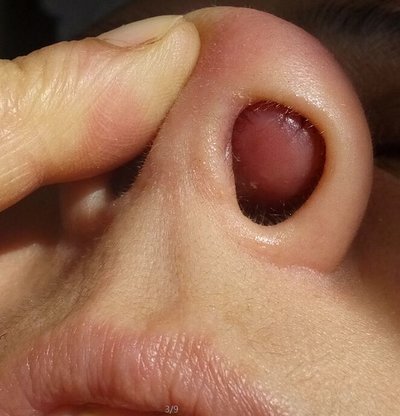Symptoms of nasal tube haematoma
summary
Nasal hemangioma is one of the benign tumors of vascular tissue, and the most common sites are the nose and paranasal sinuses. The disease can occur at any age, but mostly in young and middle-aged. Nasal hemangioma can be divided into capillary hemangioma and cavernous hemangioma. The former accounts for about 80%, and most of them occur in nasal septum, while the latter in inferior turbinate and maxillary sinus. Let's talk about the symptoms of nasal tube haematoma.
Symptoms of nasal tube haematoma
The clinical manifestations of hemangioma in nasal cavity and paranasal sinuses vary with the course of disease and the extent of lesion. Recurrent epistaxis is the prominent manifestation of the disease. The amount of bleeding is different each time. Secondary anemia may occur in patients with more bleeding, shock may occur in severe cases, and death is rare. There was progressive nasal obstruction on the bleeding side.
If the tumor is large, the nasal septum can be compressed to the opposite side, and then there are bilateral nasal congestion. The nasal cavity of patients with secondary infection has bad smell. Tumor protruding into nasopharynx can cause eustachian tube obstruction, tinnitus and hearing loss.

Cavernous hemangioma of the paranasal sinuses can compress the sinus wall, enlarge the sinus cavity, compress, absorb, thin and even destroy the bone wall. Tumor outward expansion, can occur facial deformity, exophthalmos, eye displacement, vision loss, diplopia, headache and so on.

matters needing attention
According to the location and size of the tumor, endoscopic surgery through the anterior nostril can be used to remove the tumor after opening the maxillary sinus. It can also be operated by traditional lateral rhinotomy. In order to reduce bleeding, low-dose radiotherapy or sclerosing agent injection can be given before operation; Selective preoperative embolization of maxillary artery can reduce the amount of intraoperative blood loss.














